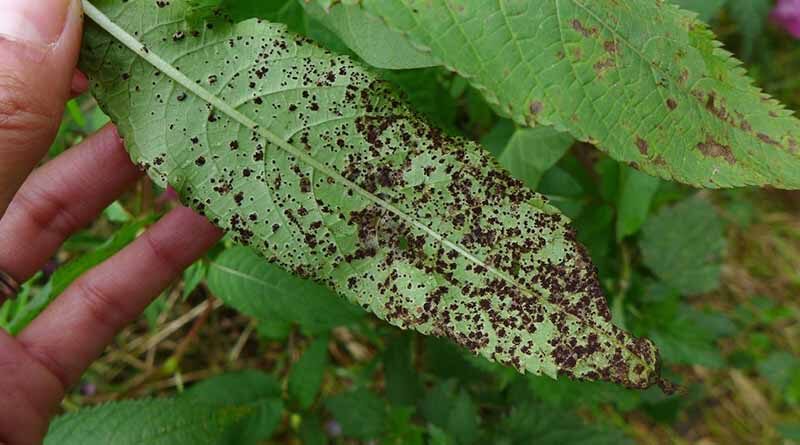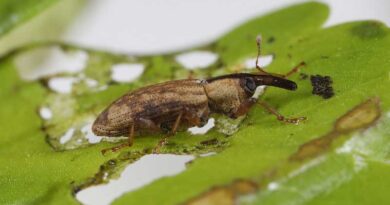‘Bio-superhero’ tackles Himalayan balsam at Hell Wath
27 June 2022, UK: A ‘bio-superhero’ rust fungus has this week been released at Hell Wath Local Nature Reserve in Ripon, UK, to help tackle Himalayan balsam – one of the UK’s most invasive weed species.
Harrogate Borough Council has joined forces with CABI – who are experts in the field of classical biological control and fighting Himalayan balsam (Impatiens glandulifera) with fungal pathogens – and the National Trust.
Himalayan balsam – also known as ‘Indian balsam or policeman’s helmet – was first introduced into the UK in 1839 as an ornamental plant during the same time period as other invasive plant species giant hogweed and Japanese knotweed.
Himalayan balsam is a nuisance as it colonises river banks, waste ground and damp woodlands. It successfully competes with native plant species for space, light, nutrients and pollinators, and excludes other plant growth, thereby reducing native biodiversity.
As an annual, Himalayan balsam dies back in the winter, and where the plant grows in riparian systems, can leave river banks bare of vegetation and liable to erosion. Dead plant material can also enter the river, increasing the risk of flooding.
Until recently, the main way to tackle it has been ‘balsam bashing’ which involved pulling it up by hand. While this helps, it doesn’t necessarily leave a lasting impact.
Now with the support of Defra funding, Harrogate Borough Council have turned to a more sustainable solution, using a rust fungus called Puccinia komarovii var. glanduliferae, which followed years of research by CABI scientists. This research showed that the rust only infects Himalayan balsam and does not pose a risk to other species.
The rust fungus was first approved for release by Defra Ministers in 2014 – making it the first fungal biological control agent to be released against a weed in the European Union. Since then, the rust has been released around the UK with signs of establishment now apparent.
The fungus will not completely eradicate Himalayan balsam at Hell Wath, but it should make the plant less competitive, enabling native wildflowers to re-establish themselves where the non-native species once dominated.
Councillor Sam Gibbs, Harrogate Borough Council’s cabinet member for environment, waste reduction and recycling, said: “This is yet another practical solution to help tackle non-native species, following our trial to release Crassula mites at Rossett Nature Reserve in Harrogate to tackle New Zealand Pygmyweed.
“Himalayan balsam is invasive and to tackle it involves lots of hard work, often carried out by volunteers. By using this ‘bio-superhero’ we have less of an onerous task in the future.”
The rust, a Puccinia species, is an autoecious (completing its entire life cycle on a single species), macrocyclic (five spore-staged rust fungus), which infects the stem and leaves of Himalayan balsam throughout the growing season.
Dr Sonal Varia, Project Scientist based at CABI’s laboratories in Egham, Surrey, said: “Himalayan balsam has rapidly become one of the UK’s most invasive weed species affecting biodiversity and beauty spots – such as Hell Wath Local Nature Reserve – and traditional methods of control alone are inadequate.
“Results from releases elsewhere in the UK suggest that the rust can perform well under our climate. It adapts to local climatic conditions and spreads from the initial area of release without having a negative impact on other species.
“Good leaf infection is frequently observed in the summer and the rust is able to survive the winter and establish populations in stands of Himalayan balsam the following year.”
Also Read: VL Bath 202 Notified variety of Soybean















